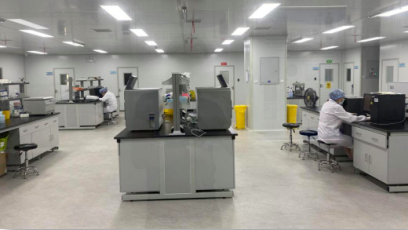At present, China's science and technology innovation activities are increasingly active, and technology transfer activities have become an important part of science and technology innovation. As an important function of the Stanford-Qingdao Research Institute, cross-border technology transfer has gradually gained prominence as an irreplaceable role. The flow of various resource elements accelerates with the process of globalization, and cross-border technology transfer has become a realistic requirement for the optimal allocation of S&T resources among countries and the realization of high technology development.
International technology transfer mainly refers to the flow of knowledge, information and technology between different countries and regions, and there are numerous scholars in China who have proposed the concept of international technology transfer, with cross-border and process integration and innovation as two indispensable elements. Since the acquirer of technology transfer is to obtain certain capabilities and benefits, international technology transfer can lead to increased knowledge, enhanced technical capabilities and good economic and social benefits.
The path and mode of international technology transfer have been studied and developed by domestic scholars and many science and technology service organizations. In an article titled "Research on the Operation Mechanism of Market-based International Technology Transfer Service Platform" published by Beijing Research Institute of Science and Technology (BAST), the forms of international technology transfer are divided into five categories: direct investment, commodity trade, patent licensing, collaborative research and development, and international exchange, which are more in line with the cross-border technology transfer cooperation of Qingdao Innovation Institute.

1. Direct Investment
The direct investment of international technology transfer refers to the investment of one country's investor in another country to establish a company and bring advanced technology to the company established by the investment, the investor has the ownership and use of the technology being transferred, the form of investment includes sole proprietorship, joint venture, cross-border merger (acquisition) and so on. For example, IBM, Microsoft, Samsung, etc. set up wholly-owned research institutes (innovation centers) in China; Volkswagen, Mercedes-Benz, BMW, Ford, GM, etc. set up joint ventures in China to produce automobiles; Geely bought Volvo, BAIC bought Saab, etc.
2.Commodity trade
The commodity trade of international technology transfer refers to the international trade of commodities with high-tech content, such as the introduction of advanced (complete) equipment, this transfer mode of international technology transfer at the early stage of the history of international technology transfer and the early stage of development of developing countries, the industrial base of developing countries is extremely weak, the need to introduce advanced (complete) production equipment to improve production efficiency and product quality, is the main mode of international technology transfer in the early stage of developing countries.
3. Technology licensing
The technology license transfer of international technology transfer refers to the transfer of technology in the form of license transfer, technology in the form of commodities traded in the technology market, this transfer of technology includes patented technology and non-patented technology (proprietary technology), most of the international technology transfer of technology license transfer is patented technology.
4. Cooperative R&D
Cooperative R&D for international technology transfer refers to a model in which units from two or more different countries and regions gather manpower, technology and resources from all parties to jointly develop a project (product). For example, the hatch and rudder of Boeing's 787 airplane are developed and produced by the Shenyang Aircraft Industry Company of China. In the form of strategic technology alliance, both parties can obtain relevant experience and technology from each other, and the fruits of cooperative research and development are shared by both parties, with patents and copyrights shared by both parties.
5.International Exchange
The international exchange of technology transfer is mainly related to the exchange of technology and knowledge with the exchange of talents as the core activity, and the technology transfer is carried out in the form of talent mobility, including public professional conferences, exhibition and exhibition, exchange of scientific and technical literature, interaction between international students and visiting scholars, employment of foreign experts, talent mobility (innovation and entrepreneurship), training and other forms of international exchange.

In 2020, Stanford Qingdao Institute will focus on introducing international talents and technology projects for cross-border technology transfer, of which the two projects already operating in China are gradually rooted in the market environment after market proofing and various business cooperation discussions. The Institute selects the cross-border technology transfer paths according to the characteristics of the technology projects, and matches the appropriate cooperation models and resources with the domestic market demand, so as to stimulate the economic and social benefits of both international projects and the local market.